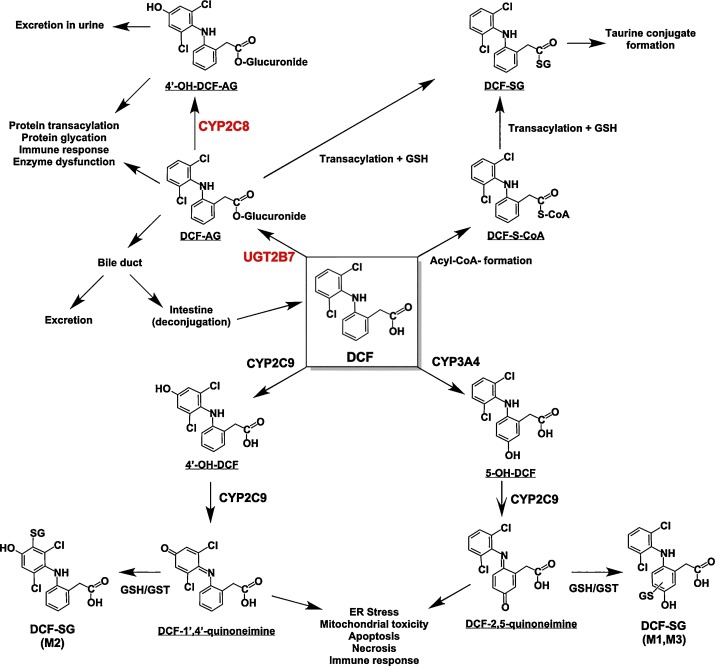当前位置:
X-MOL 学术
›
Toxicol. Lett.
›
论文详情
Our official English website, www.x-mol.net, welcomes your
feedback! (Note: you will need to create a separate account there.)
Effect of UGT2B7*2 and CYP2C8*4 polymorphisms on diclofenac metabolism
Toxicology Letters ( IF 2.9 ) Pub Date : 2018-03-01 , DOI: 10.1016/j.toxlet.2017.11.038
Katarzyna E. Lazarska , Stefan J. Dekker , Nico P.E. Vermeulen , Jan N.M. Commandeur
Toxicology Letters ( IF 2.9 ) Pub Date : 2018-03-01 , DOI: 10.1016/j.toxlet.2017.11.038
Katarzyna E. Lazarska , Stefan J. Dekker , Nico P.E. Vermeulen , Jan N.M. Commandeur

|
The use of diclofenac is associated with rare but severe drug-induced liver injury (DILI) in a very small number of patients. The factors which predispose susceptible patients to hepatotoxicity of diclofenac are still incompletely understood. Formation of protein-reactive metabolites by UDP-glucuronosyl transferases and cytochromes P450 is commonly considered to play an important role, as indicated by the detection of covalent protein adducts and antibodies in the serum of patients suffering from diclofenac-induced liver injury. Since no associations have been found with HLA-alleles, polymorphisms of genes encoding for proteins involved in the disposition of diclofenac may be important. Previous association studies showed that possession of the UGT2B7*2 and CYP2C8*4 alleles is more common in cases of diclofenac-induced DILI. In the present study, the metabolism of diclofenac by UGT2B7*2 and CYP2C8*4 was compared with their corresponding wild-type enzymes. Enzyme kinetic analysis revealed that recombinant UGT2B7*2 showed an almost 6-fold lower intrinsic clearance of diclofenac glucuronidation compared to UGT2B7*1. The mutant CYP2C8*4 showed approximately 35% reduced activity in the 4'-hydroxylation of diclofenac acyl glucuronide. Therefore, a decreased hepatic exposure to diclofenac acyl glucuronide is expected in patients with the UGT2B7*2 genotype. The increased risk for hepatotoxicity, therefore, might be the result from a shift to oxidative bioactivation to cytotoxic quinoneimines.
更新日期:2018-03-01

































 京公网安备 11010802027423号
京公网安备 11010802027423号